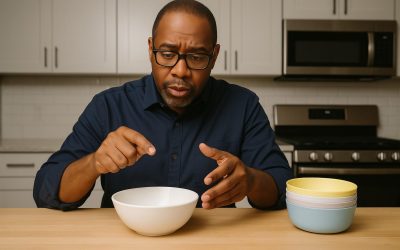As an Amazon Associate I earn from qualifying purchases.
In the world of dietary management and nutritional balance, understanding the caloric content of staple foods is essential. Rice, a primary food source for over half of the world’s population, is no exception. Among the various types of rice, white rice stands out for its versatility and widespread consumption. However, a common question arises in health-conscious circles: “How many calories are in a pound of cooked white rice?” This article delves into the nuances of this question, offering a comprehensive analysis of the caloric content in a pound of cooked white rice. We will explore factors that influence these values, such as the type of white rice, cooking methods, and additional ingredients, to provide a clear and informative overview for those monitoring their caloric intake. Whether you’re a fitness enthusiast, a health-conscious individual, or simply someone curious about the nutritional aspects of this ubiquitous grain, this exploration will shed light on an often-overlooked aspect of our daily diet.
How Many Calories Are In A Pound Of Cooked White Rice?
There are approximately 600-680 calories in a pound of cooked white rice. The exact amount can vary slightly depending on the specific type of rice and the way it’s cooked. Generally, a pound of cooked rice is roughly equivalent to 450 grams. Since cooked white rice typically contains about 130-150 calories per 100 grams, multiplying this by 4.5 gives an estimated calorie count for a pound.
To elaborate, the calorie content in a pound of cooked white rice can be influenced by factors such as the type of rice (e.g., short grain, long grain, jasmine, basmati), the cooking method (boiled, steamed, fried), and any additional ingredients added during cooking.
- Type of Rice: Different varieties of rice have slightly different caloric values. For instance, basmati rice might have slightly fewer calories compared to short-grain varieties.
- Cooking Method: The method of cooking can also impact the calorie content. For example, frying rice in oil or butter will add more calories compared to steaming or boiling it.
- Additional Ingredients: If you cook the rice with other ingredients, like oil, butter, or broth, the calorie count will increase accordingly.
It’s also important to note that rice expands when cooked. A pound of uncooked rice will have far more calories than a pound of cooked rice because cooking involves absorbing water, which adds weight without adding calories.
Therefore, while the general estimate of 600-680 calories per pound of cooked white rice is a good starting point, the actual calorie content can vary based on these factors.
TIPS
When considering the calorie content of a pound of cooked white rice, here are some tips to keep in mind:
- Understand the Basic Calculation: A pound (454 grams) of cooked white rice generally contains about 600-680 calories. This is based on the average calorie density of cooked white rice, which is about 130-150 calories per 100 grams.
- Consider the Rice Variety: Different types of white rice (like basmati, jasmine, or short grain) might have slightly different calorie counts due to variations in size, texture, and water absorption rates. Check the nutritional information specific to the type of rice you’re using, if available.
- Account for Cooking Method: The way you prepare the rice can affect its calorie content. Boiled or steamed rice will have fewer calories compared to rice cooked with added fats like oil or butter. If you add fats or other high-calorie ingredients while cooking, account for these additions in your calorie estimation.
- Measure Accurately: If possible, use a kitchen scale to weigh the cooked rice. This ensures more accurate calorie estimation than measuring by volume (such as cups).
- Factor in Expansion: Remember that rice expands significantly when cooked. One cup of uncooked rice can yield about three cups cooked. Since the weight increases due to water absorption, the calorie density decreases. A pound of uncooked rice will have significantly more calories than a pound of cooked rice.
- Check Nutritional Labels: If you’re using pre-packaged rice or rice that comes with nutritional information, refer to the label for the most accurate calorie count. This is especially useful for rice mixes or flavored rice products.
- Use Calorie Counting Tools: There are various online tools and apps that can help you estimate the calorie content in cooked rice. These tools often have comprehensive databases with information on different food items, including various types of rice.
- Remember Portion Size: It’s easy to underestimate portion sizes, especially with foods like rice that can be compact. Be mindful of how much you’re actually consuming, as this impacts your total calorie intake.
By considering these factors, you can get a more accurate estimate of the calorie content in a pound of cooked white rice, tailored to your specific preparation method and rice variety.
Frequently Asked Questions (FAQ)
When discussing the calorie content of a pound of cooked white rice, it’s beneficial to approach it from an expert perspective, focusing on precise details and considering various influencing factors. Here are some expert-level questions and answers on this topic:
Q: How does the type of white rice affect the calorie content per pound when cooked?
A: Different types of white rice, such as basmati, jasmine, or short-grain, have slight variations in calorie density due to differences in grain size and composition. However, these variations are usually marginal. The calorie content per pound for most types of white rice will fall within a similar range of 600-680 calories.
Q: Does the cooking method significantly alter the calorie content in a pound of cooked white rice?
A: The basic cooking method (boiling or steaming) does not significantly alter the calorie content of the rice itself. However, cooking methods that involve additional ingredients, like frying rice in oil or butter, will increase the calorie content. The intrinsic calories of the rice remain constant, but added ingredients contribute additional calories.
Q: How accurate are calorie estimates for a pound of cooked white rice?
A: Calorie estimates are generally accurate when standardized cooking methods and typical white rice varieties are used. However, slight variations can occur due to differences in water absorption and cooking times. It’s important to note that these are estimates, and small deviations are normal.
Q: Can nutritional labels on packaged rice products be relied upon for calorie content?
A: Yes, nutritional labels on packaged rice products are a reliable source for calorie information. These labels typically provide information based on standard serving sizes and preparation methods. For products that include additional ingredients or flavorings, the labels will reflect the total calorie content, including these additions.
Q: How does water absorption during cooking affect the calorie density of rice?
A: Water absorption during cooking significantly increases the weight of rice without adding calories, thereby reducing the calorie density. This is why a pound of cooked rice has fewer calories than a pound of uncooked rice. The expansion factor is a key element in understanding the calorie content of cooked rice.
Q: Is it more accurate to measure rice by weight or volume for calorie counting?
A: Measuring rice by weight is more accurate for calorie counting. Volume measurements can be variable due to the rice’s expansion and the compactness of the grains in a measuring cup. A kitchen scale provides a more precise measure of the amount of rice, leading to more accurate calorie calculations.
These expert-level Q&As provide a deeper insight into the factors affecting the calorie content of cooked white rice, emphasizing the importance of considering rice variety, cooking methods, and accurate measurement for reliable calorie estimation.
Conclusion
In summary, the quest to ascertain the calorie content in a pound of cooked white rice uncovers a spectrum of considerations that extend beyond mere numbers. We’ve established that approximately 600-680 calories are present in a pound of this staple, yet this figure is influenced by the type of rice, cooking methods, and any added ingredients. This analysis underscores the importance of mindful eating and awareness of how cooking styles and additional components can impact nutritional content.
For health-conscious individuals and diet planners, this information serves as a reminder of the complexity hidden within seemingly simple dietary staples like white rice. It encourages a more nuanced approach to food consumption, emphasizing the need to consider not just the quantity but the quality and preparation of our food. As we continue to navigate the intricate world of nutrition and dietary management, let us remember that knowledge and awareness are key ingredients in the recipe for a healthy, balanced diet.






